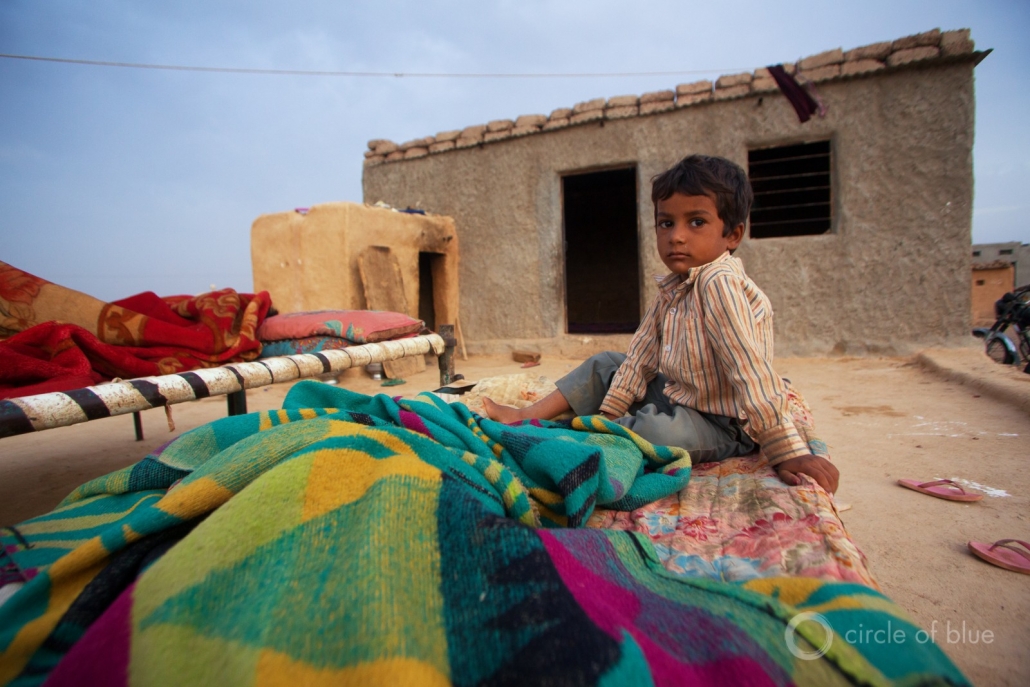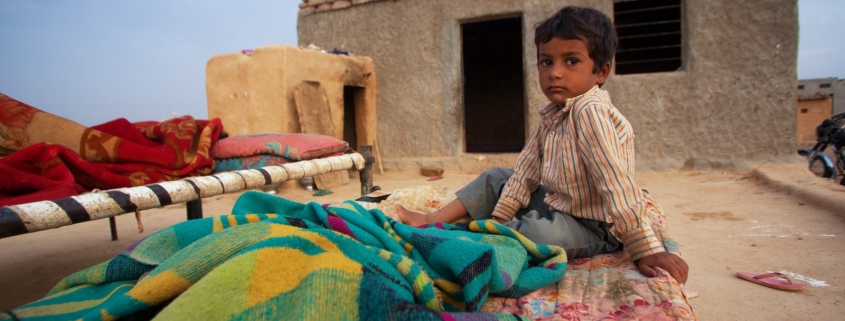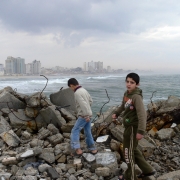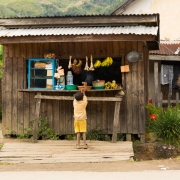HotSpots H2O: When War Destroys Water Systems, Children Suffer the Most

Photo © J. Carl Ganter / Circle of Blue
Christian Thorsberg, Circle of Blue
When water and sanitation networks are destroyed during armed conflict, children are harmed the most, according to a UN agency report.
UNICEF’s latest Water Under Fire report, released last Monday, details both the short-term and long-term effects of war and the loss of infrastructure on this generation’s children, a list of ills that includes displacement and risk of disease. The report also calls on international actors to better enforce wartime guidelines and law, and on warring parties to establish unobstructed humanitarian access during conflict.
Above all, the report demands an end to the destruction of water systems that innocent civilians depend on.
“Children caught up in conflict should not live in fear of bullets and bombs,” the report states. “And nor should they suffer for a lifetime by being denied access to water and sanitation services in childhood.”
Launched in March 2019, UNICEF’s Water Under Fire campaign has assessed the water landscape in war-torn areas. As established by several areas of international law, safe drinking water and food should be protected rights for civilians during armed conflict. But in practice, these rights are hardly guaranteed.
The campaign’s first two volumes explained shortcomings in emergency water delivery and humanitarian protections. The latest report focuses on the targeting of water infrastructure. It describes the resulting hardships for children in five contexts: the ongoing armed conflicts in Syria, Yemen, Ukraine, Palestine, and Iraq.
In Syria, where 46 attacks on water facilities were reported in 2019, over 4.7 million children lack proper water access. The al-Feijeh spring, which supplies over 70 percent of Damascus’s potable water, has been significantly damaged by airstrikes and ground attacks amid the country’s civil war, which began in 2011. This water shortage is compounded by oil spills and additional insurgencies in the country’s northeastern region.
The long-running civil war in Yemen has engendered the world’s largest humanitarian crisis. Over 85 percent of the country’s population required humanitarian assistance in 2019, and 12.2 million children are in need of water. Malnutrition and diarrhea, and the ongoing cholera epidemic, have gripped the country’s children: In 2019, the Guardian reported dirty water as being 20 times more deadly than bullets. At least 122 airstrikes have targeted water and sanitation infrastructure in the past six years.
As Circle of Blue reported in November 2020, frontline communities near the Ukraine-Russia conflict have been overwhelmed by poor water access and deteriorating infrastructure. Every four days, on average, combat occurs near these communities that further impedes water access. Since 2017, over 370 attacks on water and 44 days of supply stoppages have been reported, and the shelling of heating systems may displace between 1 million and 3 million people during the region’s cruel winter months.
In Iraq, decades of conflict have left 4.6 million people without access to basic services, and 2 million children without safe water. And in Gaza and the West Bank––where over 95 percent of water is non-potable, 26 percent of diseases are water-related, and half the region’s population are children––the barrage of recent airstrikes that decimated water and sewage pipes and desalination plants has further exhibited the upward battle children face in gaining access to basic human resources.
Christian Thorsberg is an environmental writer from Chicago. He is passionate about climate and cultural phenomena that often appear slow or invisible, and he examines these themes in his journalism, poetry, and fiction.










Leave a Reply
Want to join the discussion?Feel free to contribute!